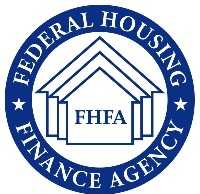Interim Report Finds Significant New Capital Investment in Public Housing
WASHINGTON – (RealEstateRama) — In 2012, Congress authorized the Rental Assistance Demonstration (RAD) to test a new way of meeting the large and growing capital improvement needs of the nation’s aging public housing stock. New research released today by the U.S. Department of Housing and Urban Development (HUD), conducted by Econometrica Inc., examines how RAD is performing and provides evidence that the program is on track to accomplish its primary goal of attracting substantial new capital to stabilize the physical and financial conditions of public housing properties significantly improving housing conditions for low-income residents.
![]()
HUD’s Rental Assistance Demonstration Interim Report finds that by October of 2015, public housing authorities choosing to participate in the program successfully generated $2.5 billion in new investment to preserve and improve their public housing stock. HUD’s evaluation discovered that early adopters of RAD leveraged $9 in capital for every $1 of public housing funds, proving the program capable of stimulating critically needed capital infusion to modernize and transform the nation’s public housing stock for low-income families, elderly, and people with disabilities. PHAs have continued to have significant success leveraging funds for modernization and, to-date, have attracted over $60,000 per unit on average to replace outdated kitchens and baths, install energy and water efficient appliances, and make other critical improvements to preserve and, where needed, transform this affordable housing stock.
“The Rental Assistance Demonstration is attracting substantial investment in a budget environment where public dollars simply can’t keep pace with the growing backlog of capital needs facing our public housing authorities,” said HUD Secretary Julián Castro. “The early returns are in and RAD is proving itself to be an exciting new tool that allows us to ensure safe, quality housing for low-income Americans. As we continue to evaluate this demonstration, it’s already clear that RAD is helping to preserve an important piece of our nation’s affordable housing stock.”
In 2010, a study prepared for HUD estimated the backlog of capital needs among the nearly 1.2 million public housing units to be approximately $26 billion, with each subsequent year accruing an additional $3.4 billion in capital needs.[1] Federal appropriations have been unable to keep pace with these growing capital needs. As a result, an estimated 10,000 public housing units fall into disrepair each year and are removed from operation. RAD was authorized by Congress to help stem the loss of public housing units by allowing local housing authorities to “convert” the current federal subsidy to a more stable long-term financing model for up to 185,000 public housing units.
Just as private owners of single- and multi-family housing routinely rely upon debt financing as a means of undertaking physical improvements to their properties, RAD allows public housing authorities to safely leverage other sources of private capital, typically debt and equity, in order to finance rehabilitation or in some cases completely replace distressed public housing. To ensure that the housing remains permanently affordable, owners must agree to long-term rental assistance contracts and use restrictions that automatically renew as they expire. Combined with the physical improvements, these requirements ensure that the housing remains affordable and in good condition for decades to come.
Fundamental to the design of RAD, current and future residents are provided a robust set of rights and protections, including the right to return to the property when repairs are completed. Further, HUD requires that a public or non-profit entity must always maintain a controlling interest in the property, even in the rare and unanticipated event of foreclosure, thus ensuring the long-term public stewardship of the properties.
In Fiscal Year 2017, HUD is requesting that Congress eliminate the current 185,000 unit-cap on public housing units that can convert without additional HUD subsidy. PHAs have already applied and received initial awards up to this cap and a waiting list has now formed. Eliminating the cap will allow every PHA that wishes to participate the opportunity to leverage capital, as this report has demonstrated is possible. The report also highlighted that some public housing properties with more serious capital needs will not be able to be sufficiently improved without additional subsidy, which is why HUD is also proposing to provide $50 million to help local public housing agencies finance the deeper recapitalization of tens of thousands of units of public housing.
Phase II of HUD’s evaluation will focus on how successful RAD is at improving the physical and financial conditions of federally assisted properties and how tenants have been impacted. The report will also update findings from the interim report as more data becomes available.
Read more about HUD’s interim report, a Summary, Case Studies, and a list of RAD activity by state and by PHA.
###
HUD’s mission is to create strong, sustainable, inclusive communities and quality affordable homes for all.
More information about HUD and its programs is available on the Internet
at www.hud.gov and http://espanol.hud.gov.
You can also connect with HUD on social media and follow Secretary Castro on
Twitter and Facebook or sign up for news alerts on HUD’s Email List.
[1] Abt Associates Inc. 2010. Capital Needs in the Public Housing Program: Revised Final Report. Report prepared for the U.S. Department of Housing and Urban Development. Washington, DC: U.S. Department of Housing and Urban Development.
Brian Sullivan
(202) 708-0685














